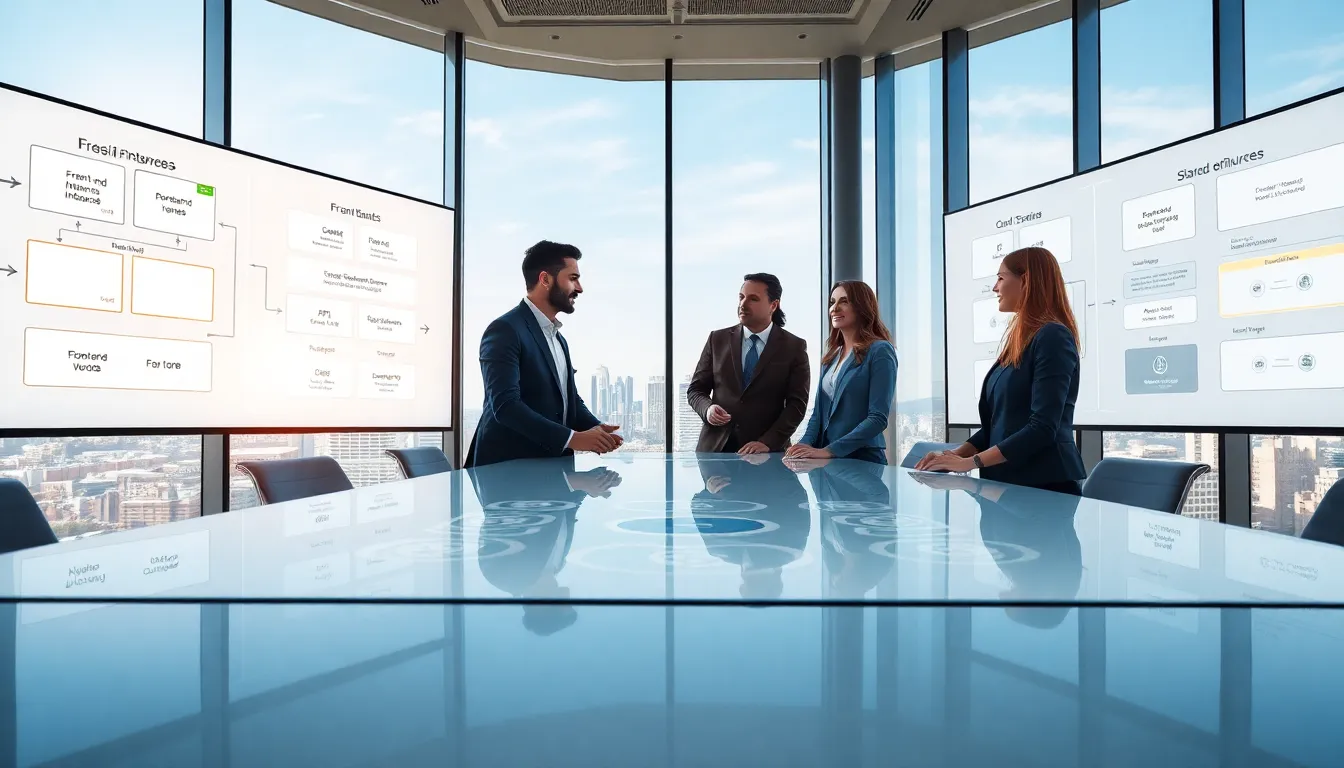Table of Contents
ToggleNavigating through the swirling world of Software as a Service (SaaS) architecture can be a challenging job. Think of it like assembling IKEA furniture without the instruction manual – it looks easy until you realize that you’re just holding a peculiar-looking shelf while scratching your head. Don’t worry, though. In this guide, we’ll seek to demystify SaaS architecture, break down its critical components, and explore how it can supercharge your business. So grab a cup of coffee, sit back, and let’s dive deep into this essential tech topic.
Understanding SaaS Architecture

At its core, SaaS architecture refers to the way software applications are designed to be delivered over the internet. Picture a cozy high-rise apartment building, each tenant enjoys their space, yet they all share the same facilities. Similarly, SaaS applications reside in a multi-tenant architecture, where multiple users leverage the same software instance while safeguarding their data.
This architecture allows for rapid deployment and an endless supply of scaling opportunities. The unique, cloud-based structure fosters efficiency, enabling users to access applications anytime, anywhere. In a world where remote work is becoming the norm, understanding SaaS architecture is crucial for both developers and businesses seeking to adapt to this changing landscape.
Key Components of SaaS Architecture
To understand SaaS architecture, one must consider several essential components that come together like the parts of a Swiss Army knife. These elements include:
1. Front-End Interface
This is what users interact with. A user-friendly interface makes all the difference in ensuring customer satisfaction and engagement. It needs to be intuitive.
2. Back-End Framework
Behind the scenes, the back-end handles processing, storage, and the logic of the application. It requires robust databases and servers to function efficiently.
3. Middleware
Often overlooked, middleware serves as a bridge, relaying information between the front-end and back-end. This component is critical for seamless operations.
4. APIs
Application Programming Interfaces (APIs) allow different software systems to communicate with one another. They’re essential for integrating with third-party services and extending the functionality of the primary application.
5. Security Measures
Security is paramount. From encryption to identity access management, effective strategies must be woven into the architecture to protect sensitive data.
Benefits of SaaS Architecture
Adopting a SaaS architecture can offer a host of benefits that can be a game changer for businesses. Here’s why many organizations are making the leap:
1. Cost-Efficiency
With SaaS, there’s no need for extensive hardware or on-premises infrastructure, reducing initial investment costs significantly. This means organizations can reallocate those funds toward growth initiatives.
2. Easy Scalability
As a business grows, so do its software needs. SaaS solutions can be scaled up or down based on usage without any hassle. Organizations pay only for what they use, making budgeting straightforward.
3. Automatic Updates
No more worrying about updating software. With SaaS, updates are handled in the cloud, ensuring the application is always running the latest and greatest version.
4. Accessibility
SaaS applications can be accessed from any device with an internet connection. This flexibility supports remote work and enhances productivity by allowing employees to work from anywhere.
Common SaaS Architecture Models
Understanding different SaaS architecture models helps organizations select the best fit for their needs:
1. Single-Tenant Architecture
In this model, each user (or tenant) has a dedicated environment which provides superb isolation but tends to be resource-intensive.
2. Multi-Tenant Architecture
This setup allows multiple clients to share the same infrastructure while maintaining security. It’s economical and ideal for widely-used applications.
3. Hybrid Architecture
As the name suggests, hybrid architecture marries elements of both single and multi-tenant environments, offering flexibility and performance based on user requirements.
Challenges in SaaS Architecture
While SaaS architecture offers many benefits, it’s not without its challenges. Understanding these obstacles can help organizations navigate them successfully:
1. Data Security
With multiple tenants sharing resources, security becomes a pressing concern. Organizations must invest in robust security measures to safeguard sensitive information.
2. Performance Issues
As demand fluctuates, ensuring consistent application performance can be challenging. Overloaded servers can impair user experience, requiring organizations to be proactive in resource management.
3. Compliance
Navigating different regulations, particularly in industries like healthcare or finance, can be tricky for SaaS providers. Compliance standards must be meticulously followed to avoid legal snafus.
Future Trends in SaaS Architecture
The landscape of SaaS architecture is constantly evolving. Here’s what to keep an eye on:
1. Artificial Intelligence Integration
AI is becoming increasingly integrated into SaaS solutions, enabling predictive analytics and automated customer service. This can significantly enhance user engagement.
2. Microservices Architecture
Moving toward microservices allows organizations to break down applications into smaller, manageable components that can be developed and deployed independently. This leads to greater agility and faster updates.
3. Increased Focus on Security
With ongoing cyber threats, enhanced security protocols will be crucial. Expect to see increased investment in security solutions to bolster data protection.







